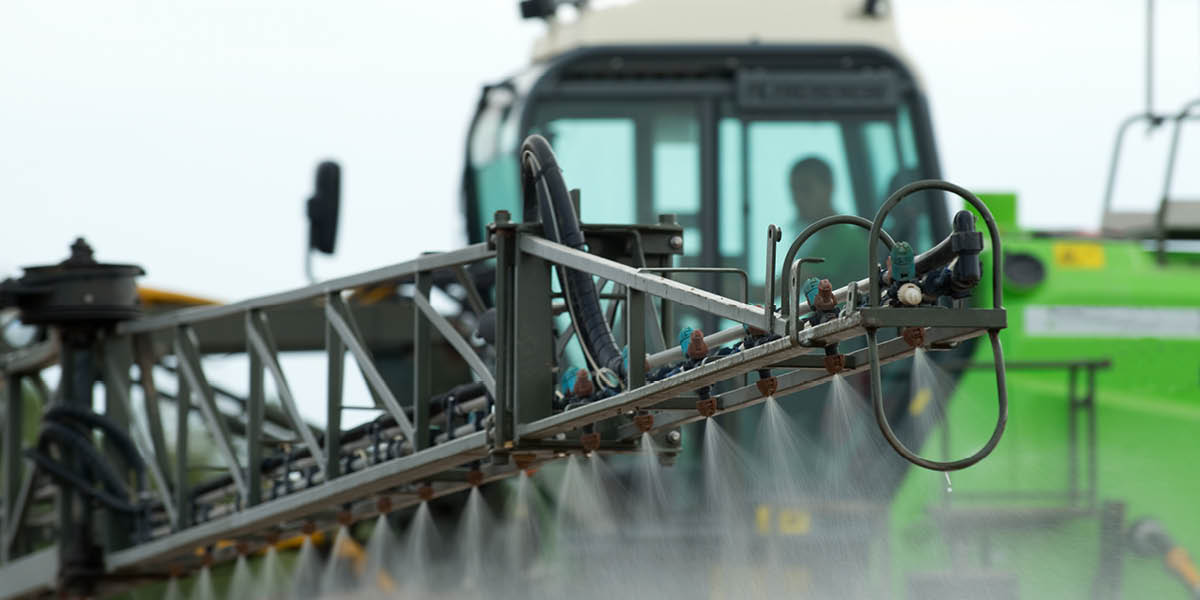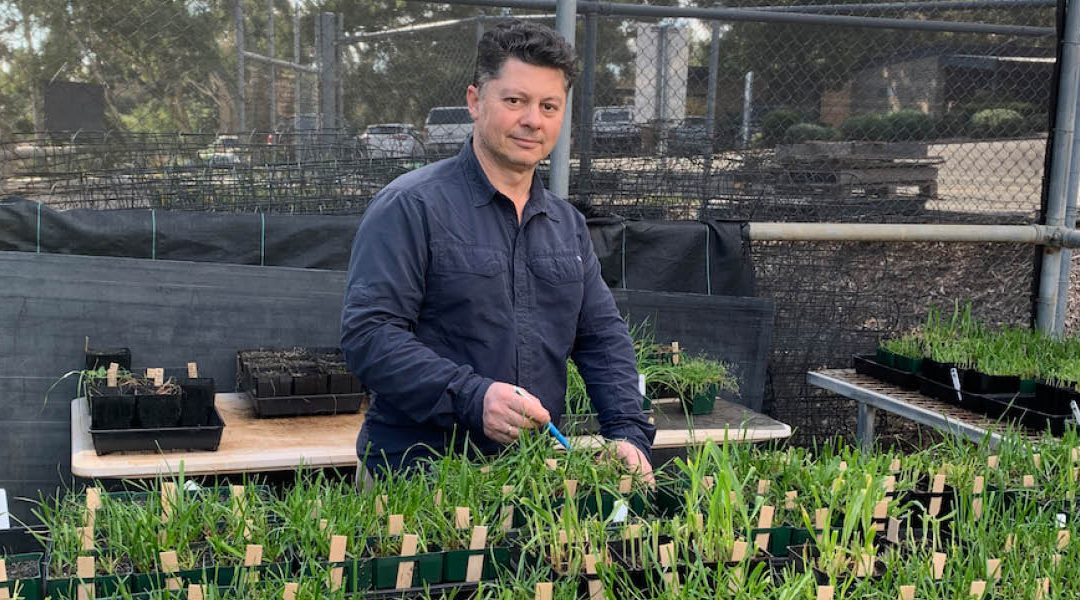There is no denying that the agricultural industry, especially turf, is facing a huge amount of herbicide resistant pressure causing weed control to be an added cost to growers both in time and dollars. Sandra Godwin talks to Dr Peter Boutsalis – a leading herbicide expert – who explains how there are growers still using herbicides blindly because they haven’t conducted a resistance test. Peter outlines some management options that growers can actively adopt to control the growing weed resistance problem.
The first Australian cases of herbicide resistance in weeds of turf grass were identified in Victoria more than a decade ago.
The active ingredient endothal, also spelled endothall, is found in products such as Poachek and was one of the first herbicides registered for use against annual Wintergrass (Poa annua) in Blue Couch, Common Couch, Bentgrass as well as Buffalo grass turf and lawns.
Testing in 2009 found Wintergrass plants survived application of endothal at 16 litres per hectare (L/ha) – 10 times the standard label rate.
Since then, about 50 cases of herbicide resistance in Wintergrass have been identified at golf courses in New South Wales (NSW), South Australia and Victoria.
The list includes nine different post-emergent herbicides, among them herbicides in the Group 2 chemistry, including rimsulfuron, trifloxysulfuron and foramsulfuron, as well as glyphosate, propyzamide and simazine.

In one instance, testing of Wintergrass samples from a NSW golf course confirmed resistance to eight different herbicides from five mode of action groups.
Herbicide resistance expert Dr Peter Boutsalis said the problem stemmed from the release of highly effective herbicides, particularly those classified as Group 2 (previously Group B)*, which were then overused at the expense of herbicides from other groups.
“Resistance to certain herbicides just happens to be very, very common in Mother Nature,” Peter said.
“So, it wasn’t too many years before entire paddocks were dominated by resistant individuals. It was like spraying water. People in the golf industry found out the same – Group Bs were highly effective on Wintergrass, and they were spraying massive populations, so why use any other herbicide?
“But within a few years, the entire area that you’ve sprayed with Group Bs can consist of entirely resistant individuals rendering those herbicides ineffective.”
Wintergrass has been especially problematic because of its wide genetic diversity, enormous seed banks and a high frequency of naturally occurring mutations conferring herbicide resistance.
A prolific seed producer, Wintergrass can flower year-round. One of its common names is Six Weeks Grass – a nod to the plant’s ability to germinate, grow and flower within six weeks under optimum conditions.
It is regarded as an environmental weed in NSW, Victoria and Western Australia.
Peter is based in Adelaide where he operates Plant Science Consulting, which specialises in herbicide resistance testing, and conducts research into herbicide resistance at the University of Adelaide.
Much of his work has been for the broadacre cropping sector, but Peter also has worked with the Australian Golf Course Superintendents’ Association, which changed its name in 2019 to the Australian Sports Turf Managers Association. He presented the results of research on herbicide resistant Wintergrass at the Association’s Conference in 2017.
In October last year, Peter contributed to a paper on further research into alternative herbicides for controlling herbicide resistant Wintergrass in turf.
Field trials in Bermuda grass on a practice green at The Royal Adelaide Golf Club, from 2018 to 2020, found resistance to four different mode of action groups (1, 2, 5, 31) and tested a range of pre- and post-emergent herbicides – including some that were not registered for use in turf.

The best results came from herbicides containing the active ingredients amicarbazone (trade name Amitron), indaziflam (Specticle) and methiozolin (PoaCure).
“I’d say that golf courses probably don’t use too many of them, but it would be good to,” Peter said.
“I would have them on a spreadsheet or a list on the whiteboard, and really mix and match to keep the system working, otherwise it’s going to become increasingly difficult. When you confirm resistance to seven modes of action, it’s then very challenging.”
In spite of ongoing efforts to promote integrated weed management, Peter said there were still growers and golf course superintendents who did not understand how to prevent herbicide resistance.
“There are growers still using herbicides blindly, because they haven’t conducted a resistance test and they’re spraying herbicides which are completely ineffective,” he said.
“There would be superintendents still doing it as well and going, ‘Oh, these aren’t working that good. I’ll just put on a bit more’. It’s happening in turf; it’s happening in agriculture as well.”
Despite receiving 32 samples of Wintergrass plugs from golf courses in three states for his initial survey in 2016, Peter said he was now testing fewer than 10 samples a year.
“It’s usually when turf managers run out of herbicide solutions that they consider testing for resistance to check if they have resistance, or if they’re doing something wrong,” he said.
Resistance testing is something he recommends all growers, including turf managers, do every three to four years or sooner if resistance is suspected.
“If you’ve got that information, you can then choose a combination of herbicides to maximise weed control and optimise weed control,” he said.
For more information about herbicide resistance testing go to www.plantscienceconsulting.com.au
*Herbicides were previously allocated to letter-based herbicide Mode of Action (MOA) groups in Australia. This is being updated between now and 2024 to a number-based classification that aligns with systems already in use overseas by the Global Herbicide Resistance Action Committee.
Herbicide resistance a global problem
There are currently 509 unique cases (species x site of action) of herbicide resistant weeds globally, with 266 species (153 dicotyledons and 113 monocotyledons). Weeds have evolved resistance to 21 of the 31 known herbicide sites of action and to 164 different herbicides. Herbicide resistant weeds have been reported in 95 crops in 71 countries.
Source: International Herbicide-resistant Weed Database, December 2021 http://www.weedscience.org/Home.aspx
The huge bane of Wintergrass to the turf sector

Above: Royal Adelaide Golf Club course superintendent Nathan Bennett.
Poa annua, also known as Wintergrass, is the bane of golf course managers across Australia and around the World.
Its genetic diversity, self-pollination, abundant seed production, hardiness and tendency to mutate have made it one of the grasses most likely to develop herbicide resistance.
The Royal Adelaide Golf Club course superintendent Nathan Bennett said it was becoming more and more difficult to meet the expectations of golfers who demand single species playing surfaces.
“Golfers want purity, they want pure surfaces without weeds and without other grass infesting it,” he said.
“It becomes harder for us to produce that, because the chemicals we did have are no longer in our arsenal, and the chemicals we do have aren’t working because the Poa’s now resistant to them.”
Nathan said most manufacturers were focussed more on improving existing herbicides than developing new chemistry and were unwilling to fork out money to register more chemicals for use in turf.
“The problem is we’re (turf) such a small market compared to agriculture, and it costs such a large amount of money for registration that some of the companies don’t bother with it,” he said.
“Some of the products that we did use are still used in ag but have no turf registration, which means we can’t use them in turf.”
Nathan said herbicide resistance was a significant and growing problem for the wider golfing community and all sorts of weed control methods had been tried, from burning plants to “droughting them out”.
“But as soon as you start putting water back on, it pops its head up again,” he said. “The roots don’t even have to grow in the ground, they can grow sideways in the thatch and get the moisture out of it.”
Nathan said some courses had responded by shifting away from a one-grass policy or being less fanatical about Poa.
“I think that’s the correct move because it comes at a massive cost, particularly for smaller clubs,” he said. “There’s a huge cost to try and keep grass or Poa out of their surfaces, but they’re better off almost trying to manage it rather than getting rid of it.”

Tips for preventing herbicide resistance
- Integrated Weed Management is the coordinated use of a variety of control methods, reducing reliance on herbicides alone, and increasing the chances of successful control or eradication.
- As well as rotating herbicides from different Mode of Action (MOA) groups, they should be applied at the highest label rate when weeds are small and under the correct environmental conditions.
- Integrating both pre- and post-emergent herbicides into a weed management plan will diversify MOAs and eliminate weeds before they mature and develop seed.
- Using two herbicides with different MOAs in the same tank mix can reduce the need for a follow-up spray and decrease the potential for resistance.
- Plants that escape control should be removed manually or chemically using a high rate or non-selective spot spray, according to label recommendations.
- Healthy, vigorously growing turf is the best defence against incursion by any weeds.
- Where possible, include non-chemical methods such as flaming, steaming, strategic cultivation, slashing, and observation of strict weed hygiene to prevent the transfer of weed seeds on shoes, clothing, vehicles and implements.

